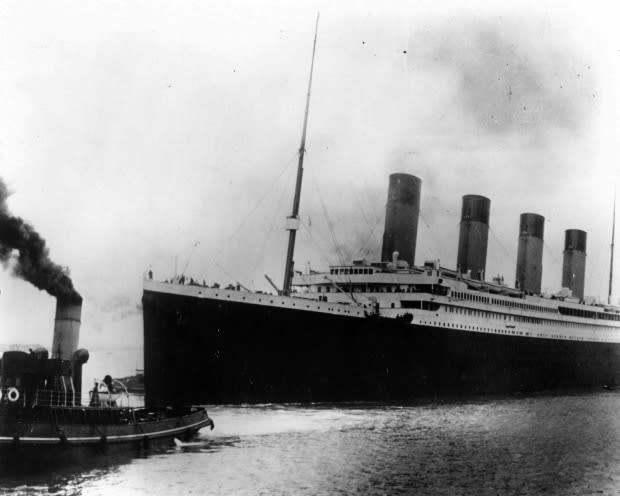'It's sentimental': Titanic slowly disintegrates into ocean floor
A retired Dalhousie University civil engineering professor predicts the RMS Titanic will only be around for another 25 years before it disintegrates into the ocean floor.
Henrietta Mann made the comment after seeing some of the first-ever 4K images of the ill-fated liner that were released this week.
The images were taken from a video by Atlantic Productions and show how much the ship has deteriorated in 14 years.
"It's sentimental," Mann said. "You know, we learn so much. So many lives had been lost. It's like a historic icon and I feel a little bit sorry for the next generation. They will have only footage. There won't be actually the wreck any longer."
More than 1,500 people died
The Titanic struck an iceberg the night of April 14, 1912, and sank nearly 600 kilometres off the coast of Newfoundland. It sits 3,810 metres below the North Atlantic surface.
More than 1,500 people died. Some of them are buried in Halifax.
The exact location of the wreckage was discovered by French and U.S. explorers in 1985.

One thing that stood out to Mann after looking at the new Titanic images was that the rusticles — the icicle-like formations that were once a bright reddish colour — have turned to grey.
Mann theorizes this is because they're covered with marine snow. Those are small particles of organic matter from the top of the ocean that have settled at the bottom.
"Which tells you that [rusticles] are not growing as fast as before if snow can accumulate in such large quantities. When I say quantities, we are talking about just dusting, like when you dust a cake a little bit," she said.
"Second, if you compare the previous photographs, the rusticles are now much more leaning away from the ship."
Natural forces at work
Mann thinks the reason the rusticles are leaning away is because of stronger currents at that level of the ocean.
A news release from Atlantic Productions noted the wreck has become "vulnerable from sweeping eddies and subjected to ever-changing sea currents."
"Salt corrosion, metal-eating bacteria and deep current action are having the greatest impact on the wreck," the Atlantic Productions news release stated.
"The team observed one area of deterioration was in the officers' quarters, where the captain had his rooms. Here the hull has started to collapse, taking with it the staterooms."
The captain's bath tub that was once visible is no longer there — likely because it fell through the decaying ship to a lower level.

Mann first became interested in the ship's decay after she saw a colleague at the Bedford Institute of Oceanography looking at a rusticle from Titanic under a microscope.
Mann commented that it looked like iron bacteria because of her experience with mining tailings.
Mann said she is hoping to examine the footage more closely to get a better idea of how much Titanic is decaying.
"They had five dives over eight days so there must be lots of information. If somebody can contact me, I would love to look at it and have some comments about what the differences are," she said.
Scientists involved with the latest expedition will eventually publish full results alongside a documentary film being made by the British Academy of Film and Television Arts.
MORE TOP STORIES


